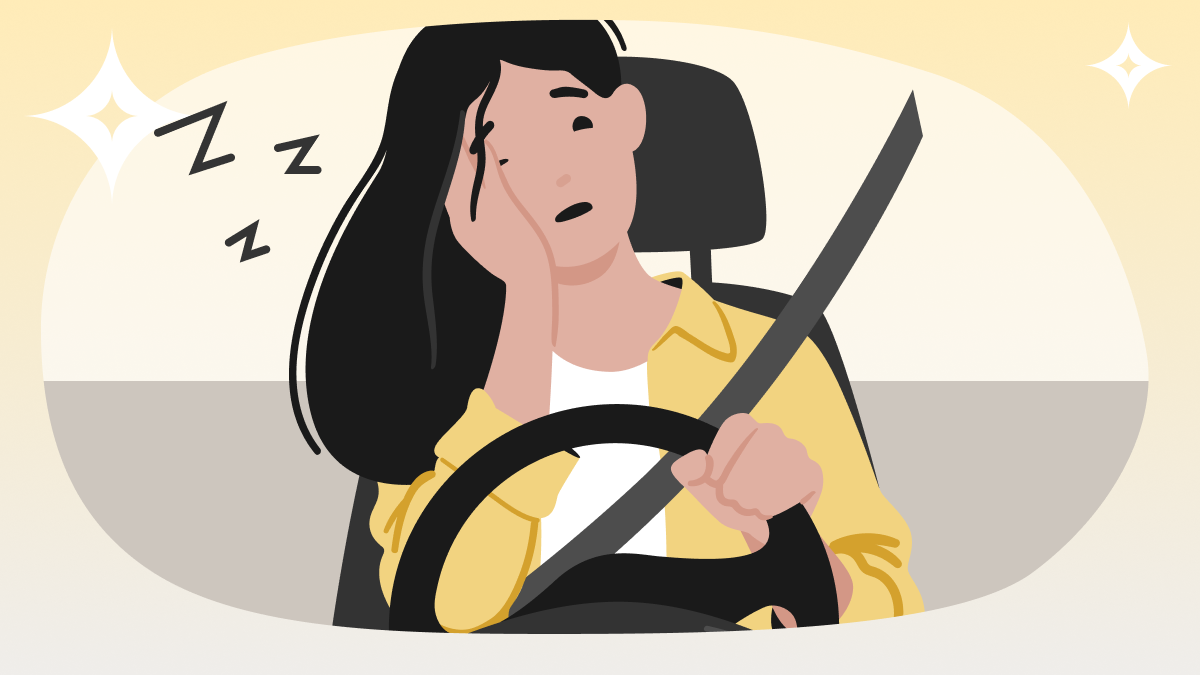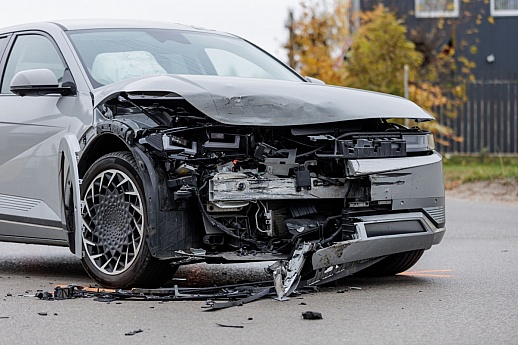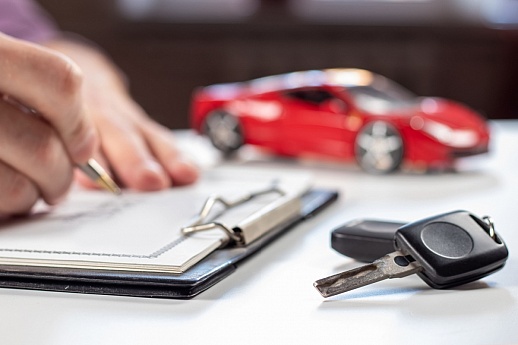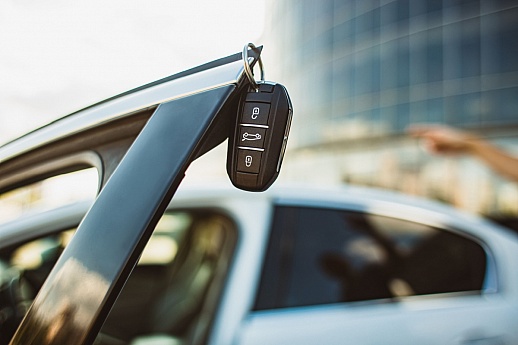How to Stay Awake While Driving: 7 Tips
When researchers asked over 140,000 people if during the past 30 days they had nodded off or fallen asleep while driving, who could have guessed the frightening results? Over 4% said they had.
That data suggests 7.5 million U.S. drivers dozed off while driving last month. This can pose serious hazards to drivers and those around them, especially when driving at night.
Of course, it is strongly advised that drivers don’t get behind the wheel if they’re tired. But, sometimes, this can’t be avoided, especially if you work the night shift, are a nighttime truck driver, or are on a road trip.
Below, we highlight the top ways on how to stay awake while driving to help keep you and other drivers safe.
The Dangers of Drowsy Driving
Every year in the U.S., roughly 328,000 accidents occur due to driver drowsiness. Of these accidents, 6,400 are fatal. This statistic highlights the number one danger of tired driving – death.

However, there are several more dangers that can make it unsafe for you and others on the road:
- Your risk of accidents increases by over 11% when you’re tired or have had less than four hours of sleep. This is because a lack of sleep affects your alertness and reaction time.
- Drowsiness can increase your chances of falling asleep while driving. This can seriously harm you and others as you are more likely to be in an accident.
- Tired driving can affect your judgment and vigilance on the road. It can cause you to swerve, fail to use turn signals, miss cars in your blind spots, or brake too late.
Recognizing the Signs of Driver Fatigue
Most drowsy-driving accidents occur between midnight and 6 a.m. This is because most people’s circadian rhythms naturally dip during this time, leading to increased sleepiness. Darkness also contributes to more drowsiness, as the lack of light makes it harder for drivers to stay alert and focused when driving at night.
The following are common signs of driver fatigue:
- Frequent yawning and blinking
- Difficulty focusing on the road and daydreaming
- Wandering eyes and thoughts
- Heavy eyelids
- Swerving and lane drifting
- Restlessness
- Difficulty remembering the miles driven
If you notice any of these symptoms of fatigue, you can practice the following strategies to stay awake while driving.
Best Ways to Stay Awake While Driving
Safe driving is good driving. And the best way to ensure the safety of yourself and others is to remain alert and vigilant while you’re behind the wheel.
Here are some of the best ways to stay awake while driving:
1. Take Breaks
If you’ve been driving for a while and are starting to feel a little drowsy or fatigued, immediately pull over at a rest stop or gas station. Get out of the car, do some stretches, and walk around for a bit.
Taking regular breaks helps combat the monotony of driving, which can contribute to drowsiness. It improves blood circulation and refreshes your mind, helping improve concentration, alertness, and reaction time.
2. Grab a Coffee or Energy Drink
Most people think the best remedy for driving fatigue is a coffee or an energy drink. It’s partially true – grabbing a cup of joe or your favorite energy drink before you get behind the wheel can give you a little boost to help you make it to your destination safely.
However, while these pick-me-ups can help improve your alertness, they should be consumed in moderation. This option is most suitable if you’re going a shorter distance, like from an event or work straight home.
For longer road trips, guzzling several energy drinks or cups of coffee could do more harm than good. That’s because the temporary energy boost is often followed by a crash, leaving you more tired than before.
3. Stay Hydrated
Dehydration, even in mild cases, can affect your health and alertness when driving. A lack of water can cause fatigue and affect your cognitive functions like attention, concentration, and short-term memory.
If you haven’t had the daily recommended amount of water, it could cause drowsiness that affects your driving ability. Staying hydrated can help improve your energy levels and circulation, making it a great way to stay awake while driving short or long distances.
4. Adjust the Air
Sometimes, a breath of fresh air is all you need to wake up. Did you know that warmer air tends to make people feel more sleepy? So, if you’re driving and feel a little tired, roll down your window or turn on your AC for a cool breeze.
Cool air filters out carbon dioxide and enhances your oxygen intake levels. This helps you feel more invigorated and awake. If you already have the air on while driving, cool the temperature by a few degrees to help refresh and stimulate your body.
5. Listen to Audiobooks or Podcasts
The long stretches of road can become monotonous, causing most drivers to daydream or feel fatigued. It can be hard to keep your mind occupied, especially if you’re driving along at night.
Audiobooks and podcasts are a great way to help keep you awake and alert during longer drives. With nearly limitless options, all you have to do is choose some that you’re interested in or can learn from. You can sign up for an Audible account to access thousands of audiobooks in various genres, like mystery, biographies, or romance.
Similarly, you can access podcasts on Spotify or Apple Music that cover a range of topics, from true crime to pop culture to technology.
6. Call Someone
My fiancé and I use this strategy quite often. When either of us is driving alone, especially at night, we’ll call each other using a hands-free Bluetooth connection. We’ll usually chat about our days or anything stimulating to help keep the driver awake and alert.
Like the coffee and energy drink option, this one likely won’t be realistic for extended drives. But I still prefer this option for shorter distances at night because, in the event that an accident occurs, the person on the line can immediately call authorities.
7. Pull Over
In some cases, it’s not safe for you or others to continue driving if you’re tired. Instead of looking into how to keep yourself awake while driving, it is best to find somewhere to stay for the night.
Google Maps has a great search engine feature that allows you to look for hotels near you. It will show you options closest to you and prices for a single-night stay. You can even check availability directly in the app and reserve your room from top booking sites like Priceline and Booking.com.
Where Should You Be Alert While Driving?
Of course, you should always be alert while driving. However, in certain situations, your vigilance should be doubled:
- New and unfamiliar roads
- Narrow roads
- Mountain roads
- School zones
- Construction zones
- Highways and freeways
- Roads with limited lighting, street markings, or both
- Urban areas with high traffic, pedestrians, or both
How to Keep Yourself Awake While Driving: Final Thoughts
It’s always best to be safe rather than sorry on the road. We covered several strategies that you could use to help you feel more awake while driving, especially at night.
However, if you don’t feel comfortable getting behind the wheel because of your drowsiness, it is always best to find somewhere to spend the night.
Sources
New York State. “Drowsy Driving Statistics.” Accessed July 30, 2024.
National Safety Council. “Drivers are Falling Asleep Behind the Wheel.” Accessed July 30, 2024.
HouseGrail. “8 Drowsy Driving Statistics and Facts: 2024 Update.” Accessed July 30, 2024.
National Highway and Traffic Safety Administration. “Drowsy Driving.” Accessed July 30, 2024.



